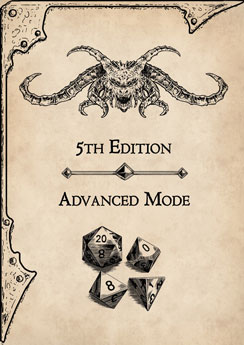Tiny beast (dinosaur), unaligned
Armor Class 15
Hit Points 3 (1d4 + 1)
Speed 40 ft.
Proficiency Bonus +2
Proficiency Bonus +2 (5th Edition Advanced Mode)
| STR | DEX | CON | INT | WIS | CHA |
|---|---|---|---|---|---|
| 4 (-3) | 18 (+4) | 12 (+1) | 2 (-4) | 11 (+0) | 5 (-3) |
Saving Throws Dex +6
Skills perception +2
Senses passive perception 12
Languages –
Challenge 1/4 (50 XP)
Pack Tactics. The Compsognathus has advantage on an attack roll against a creature if at least three Compsognathus are within 5 ft. of the creature and the ally isn’t incapacitated.
Surprise Attack. If the Compsognathus surprises a creature and hits it with an attack during the first round of combat, the target takes an extra 1d2 damage from the attack.
Swarm Attack. When three or more Compsognathus coordinate an attack on a single target, they swarm the creature, making it difficult for the target to defend against multiple foes. The target has disadvantage on any attack roll against the Compsognathus, and the Compsognathus gain a +1 bonus to their AC due to their swarming tactics.
ACTIONS
- Bite. Melee Weapon Attack: +6 to hit, reach 0 ft., one target. Hit: 1 piercing damage.
5th Edition Advanced Mode
Limiting the power of a character and making the overall difficulty of the game harder, does not reduce the creativity, indeed it does quite the opposite.
The Game Master has the option to use any and all of the instances proposed in this guide, or just some of them according to their preference.
It is the lack of something that move and motivate characters, not the abundance of it
DESCRIPTION
The Compsognathus, often referred to as “compy,” is a diminutive dinosaur that roams the realms of D&D. This tiny beast is known for its agility and speed, which it uses to navigate through its environment with ease. Despite its small size, the Compsognathus is a carnivorous creature, with a diet that includes smaller animals and insects. Its appearance is reminiscent of a chicken, with a slender, elongated body, a long tail for balance, and a narrow head with sharp eyes that miss little in their surroundings.
COMBAT
In combat, the Compsognathus is known for its pack hunting tactics. These creatures prefer to ambush their prey, often attacking when the target least expects it. They are particularly adept at taking advantage of a sleeping victim, using their numbers and surprise to their advantage. While individually they may not pose a significant threat, in groups, they can be quite formidable, especially when coordinating their attacks.
HABITAT / SOCIETY
Compsognathus are social creatures that live in packs. They are commonly found in warm climates, favoring forested areas where they can use the dense foliage to hide and stalk their prey. Their social structure allows them to work together effectively, whether it’s hunting for food or defending against larger predators.
ECOLOGY
The ecology of the Compsognathus is that of a typical carnivore. They play a role in controlling the population of smaller animals and insects, which forms the bulk of their diet. Living in packs, they have developed a complex social structure that enables them to survive and thrive in their chosen habitats. Their presence in an ecosystem is a sign of a healthy balance, as they help maintain the natural order within their ecological niche.
